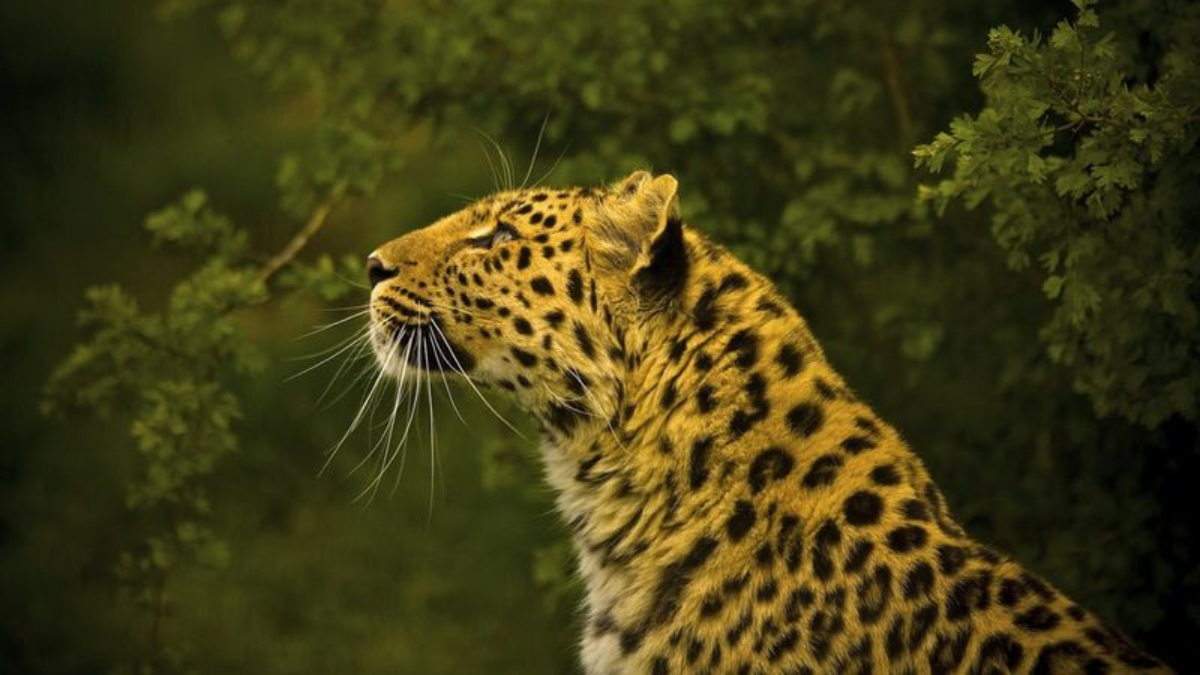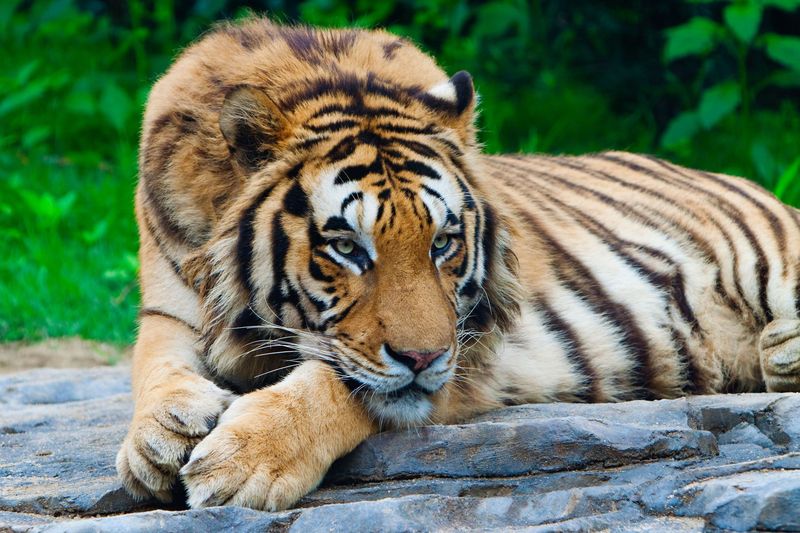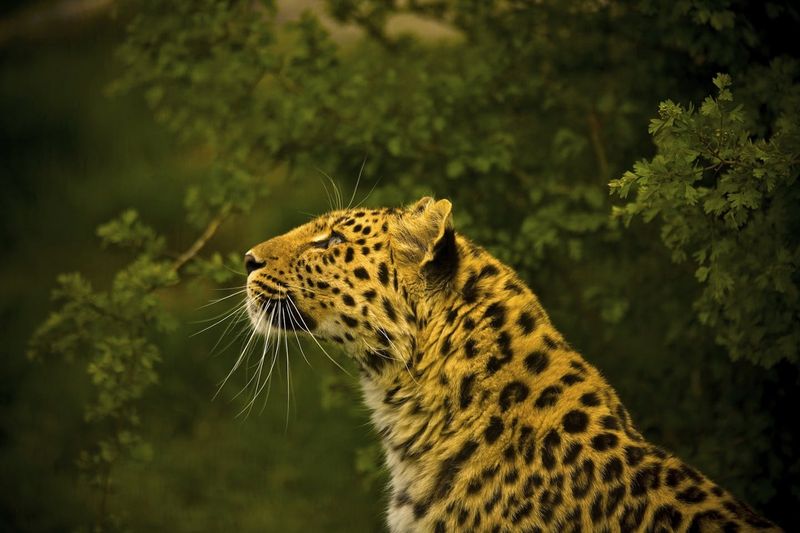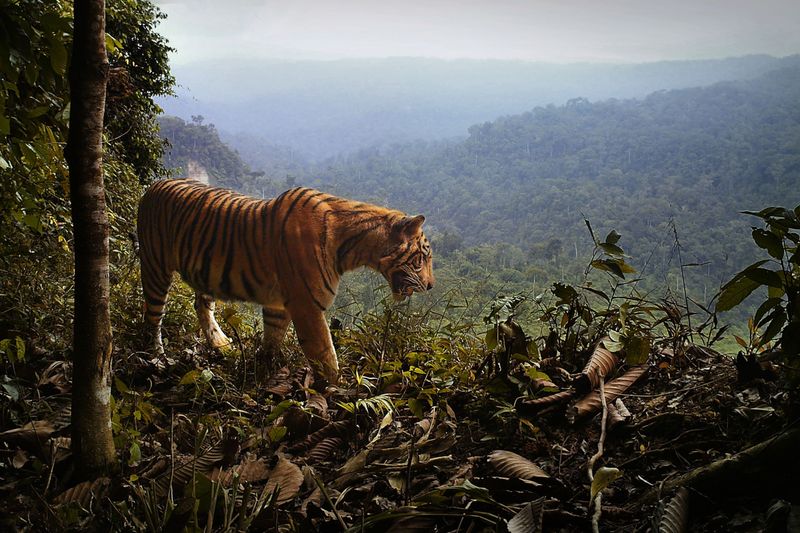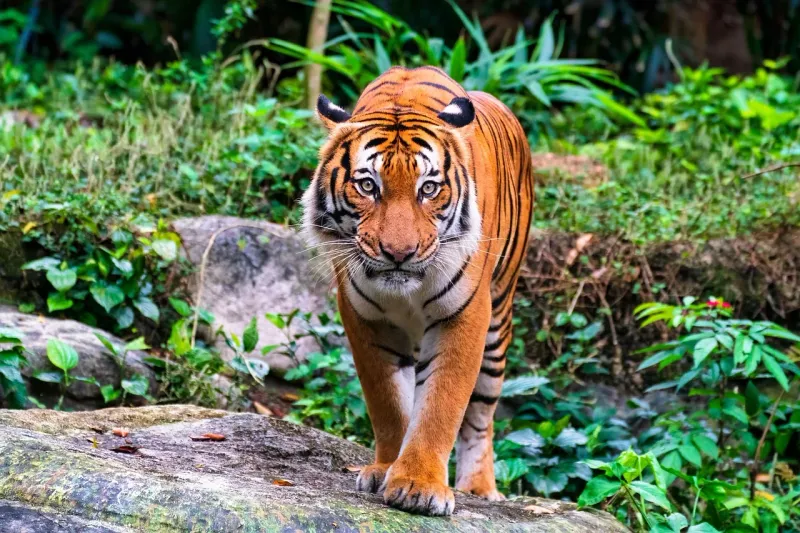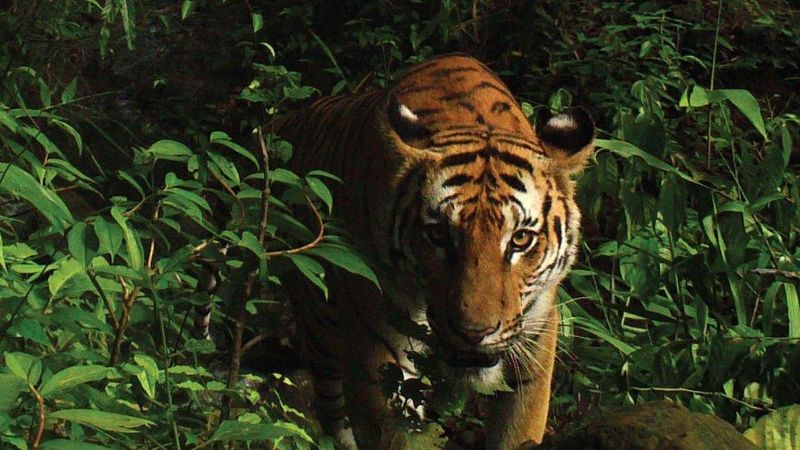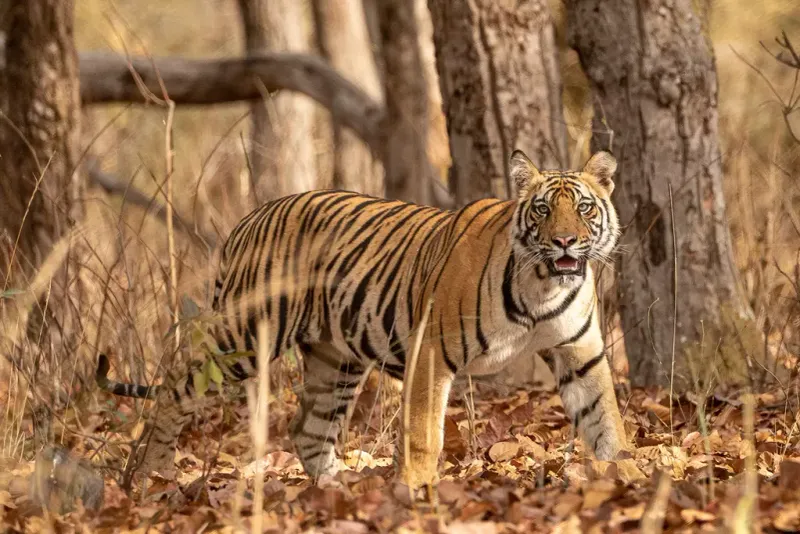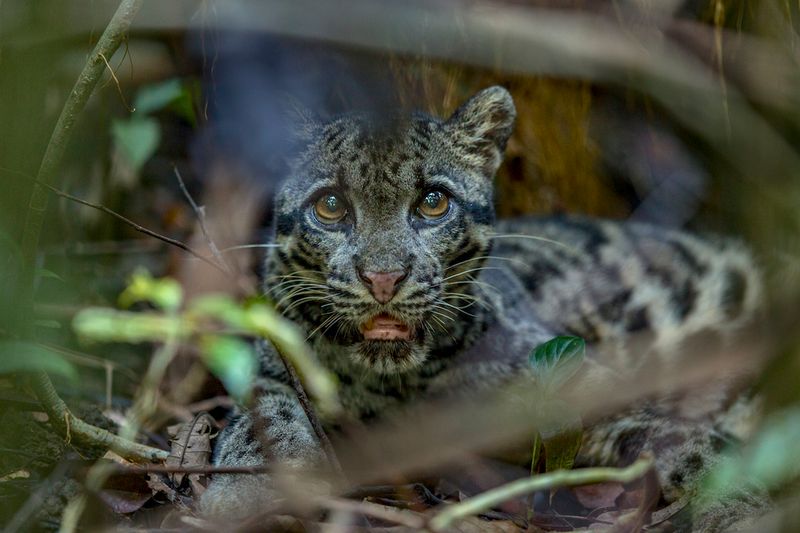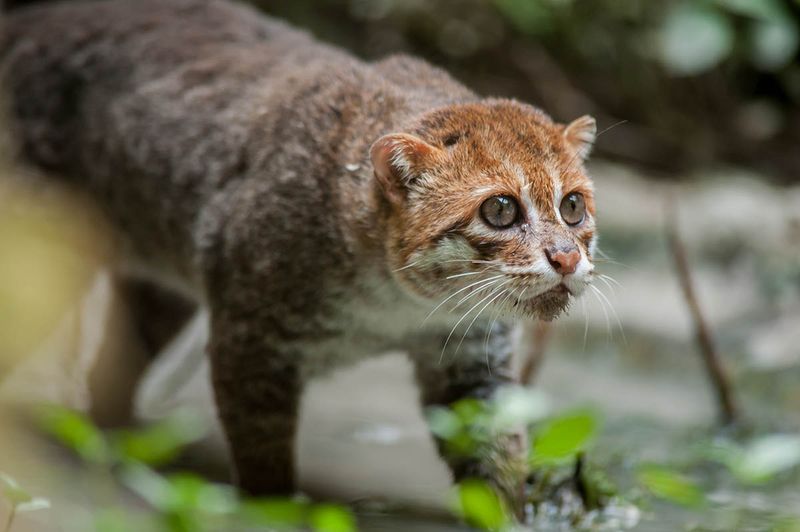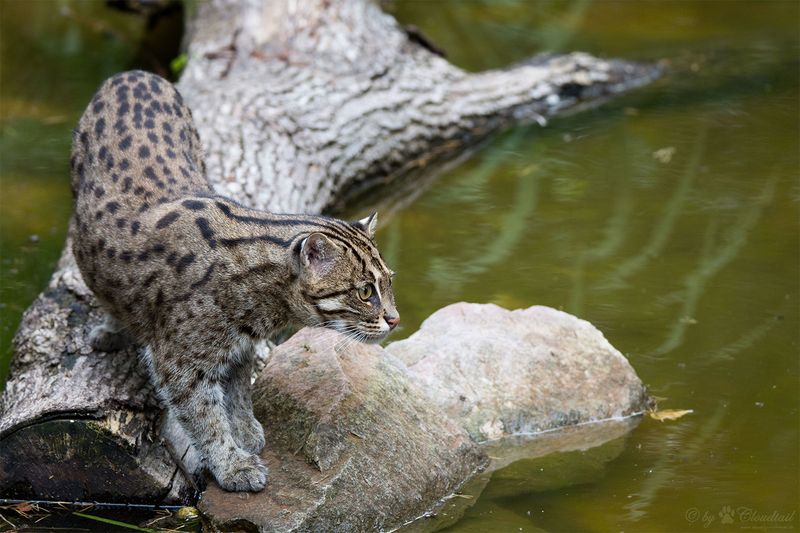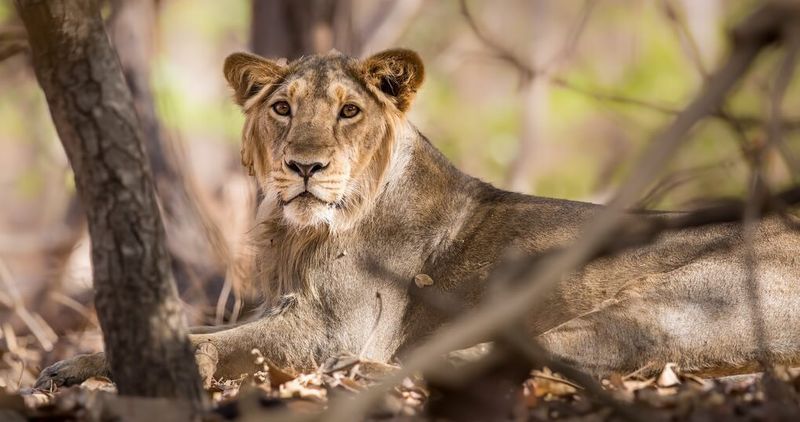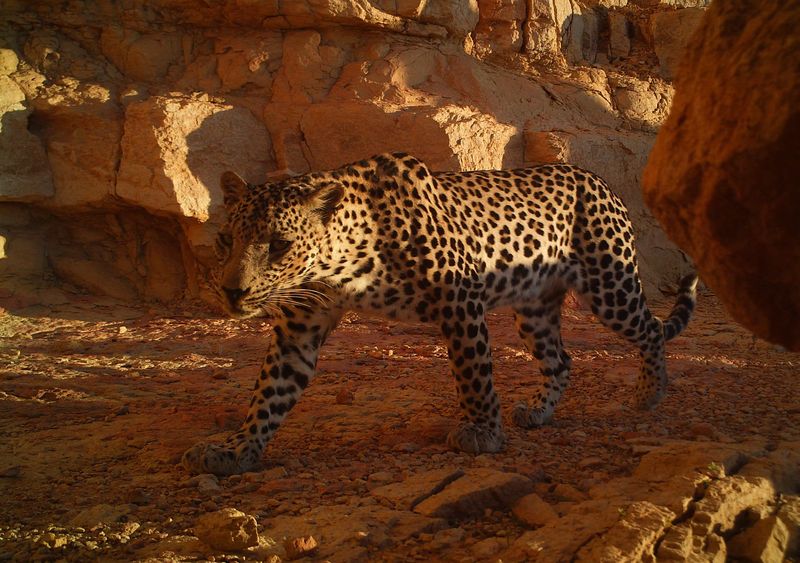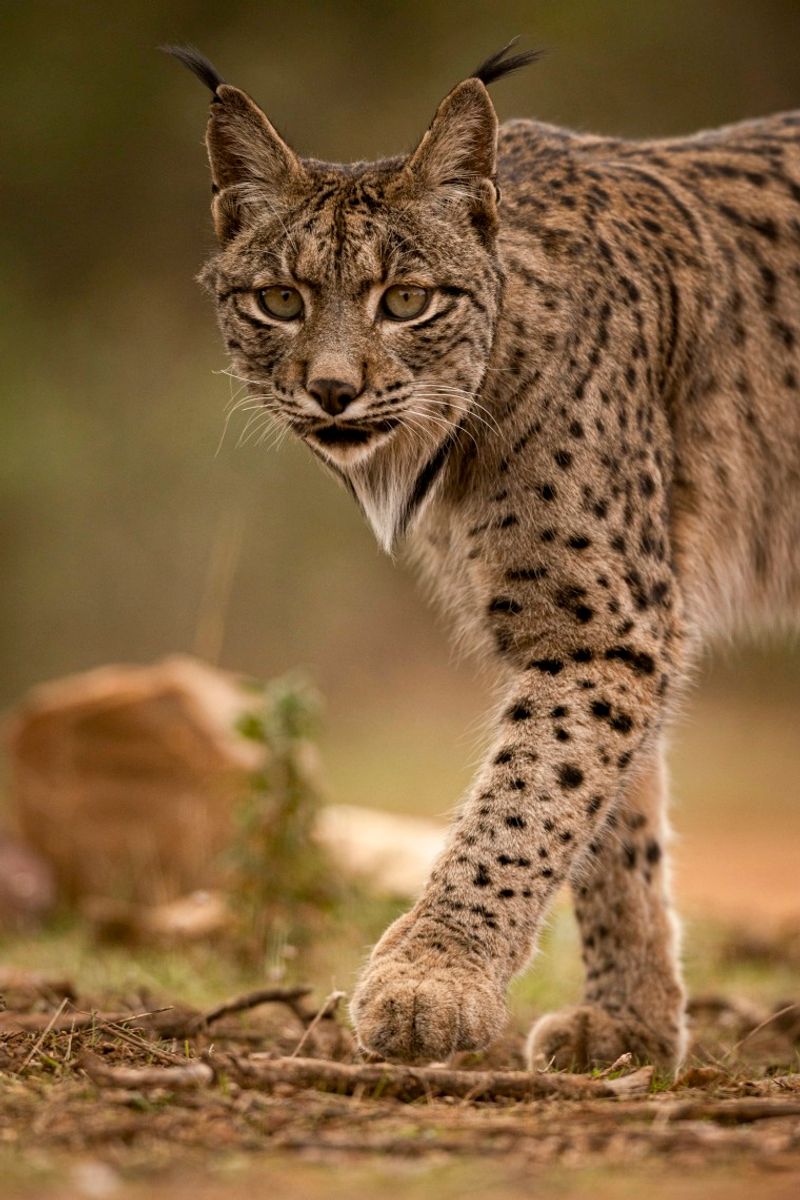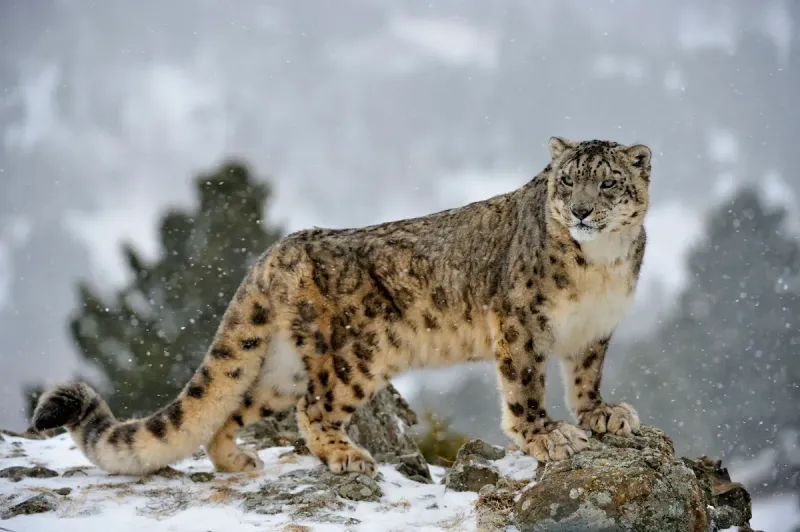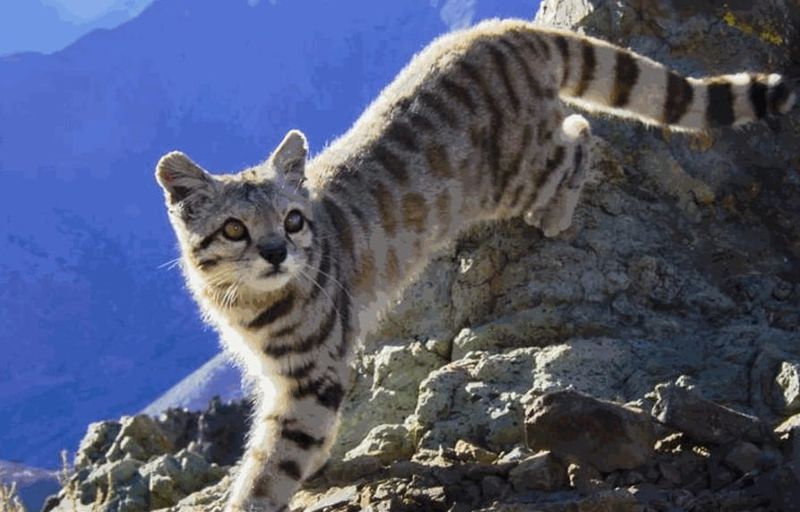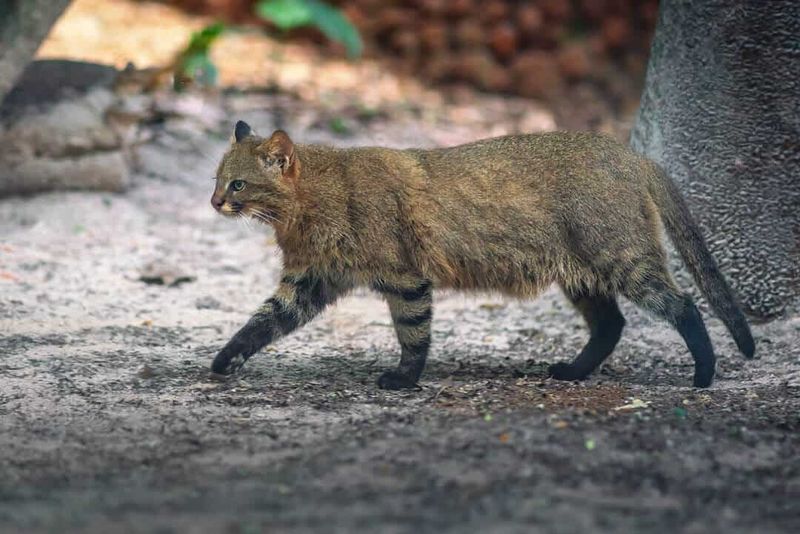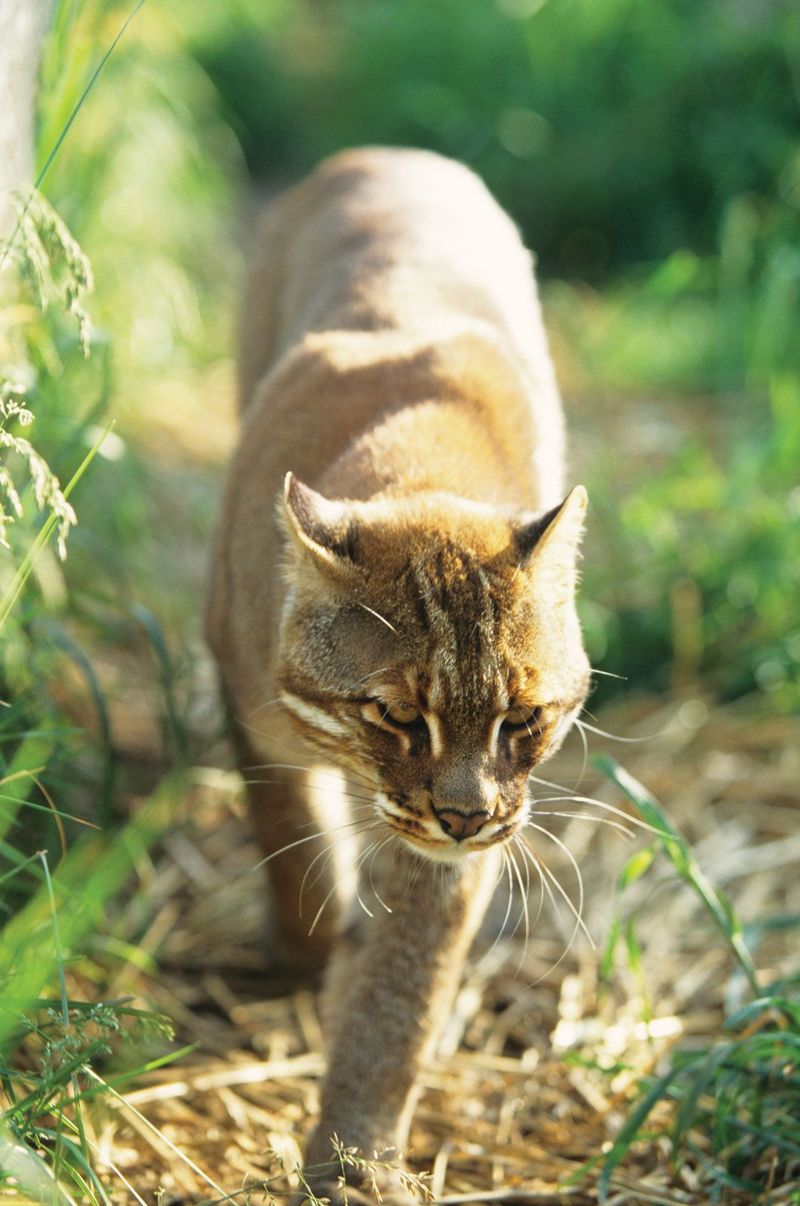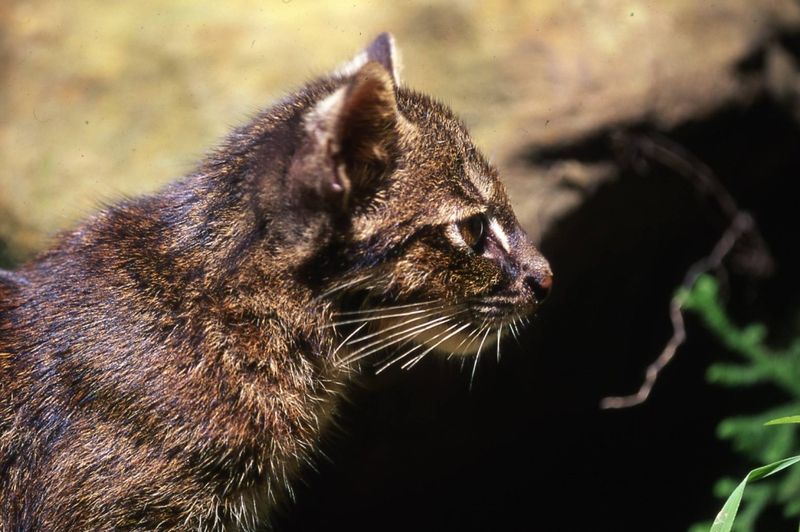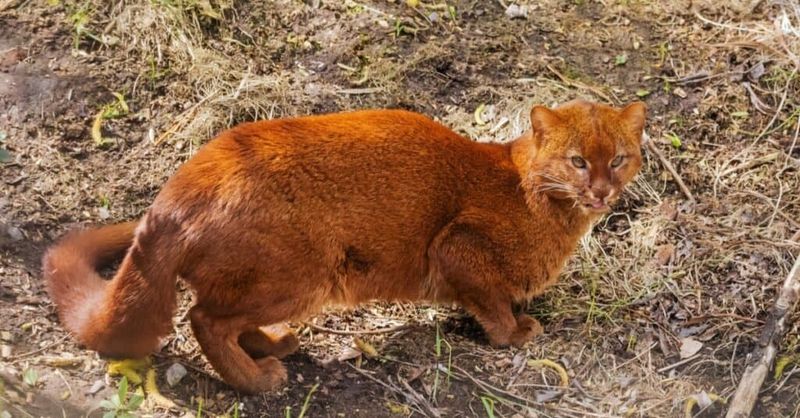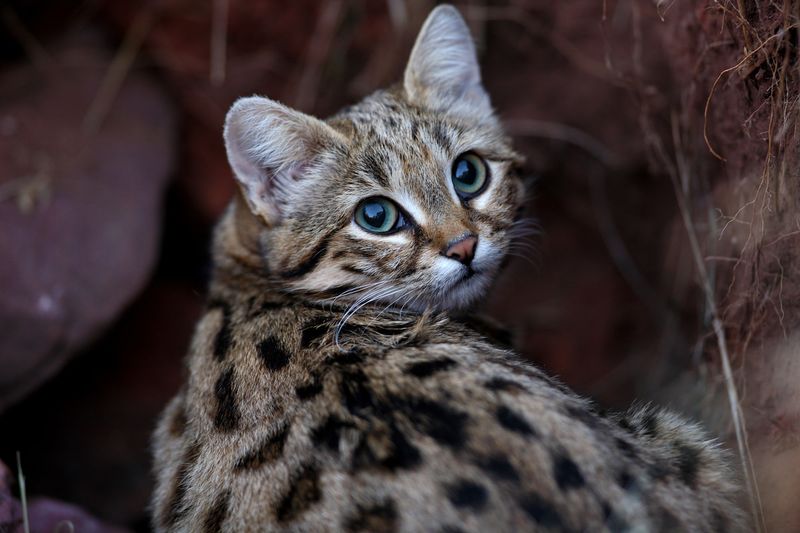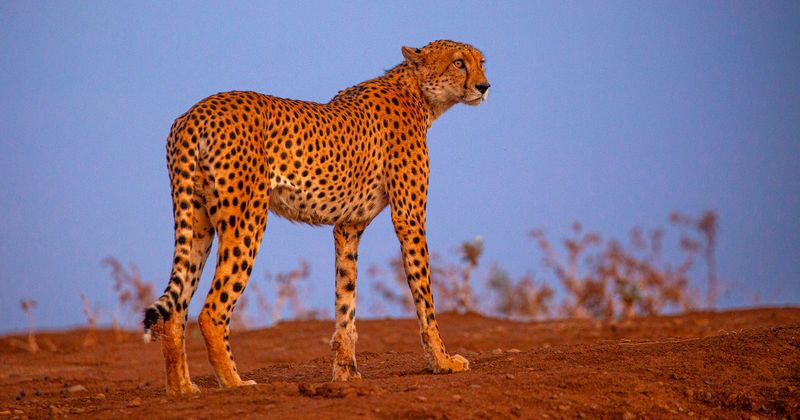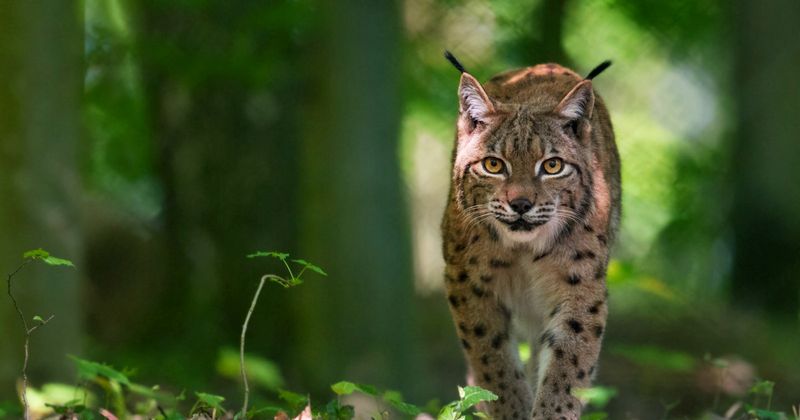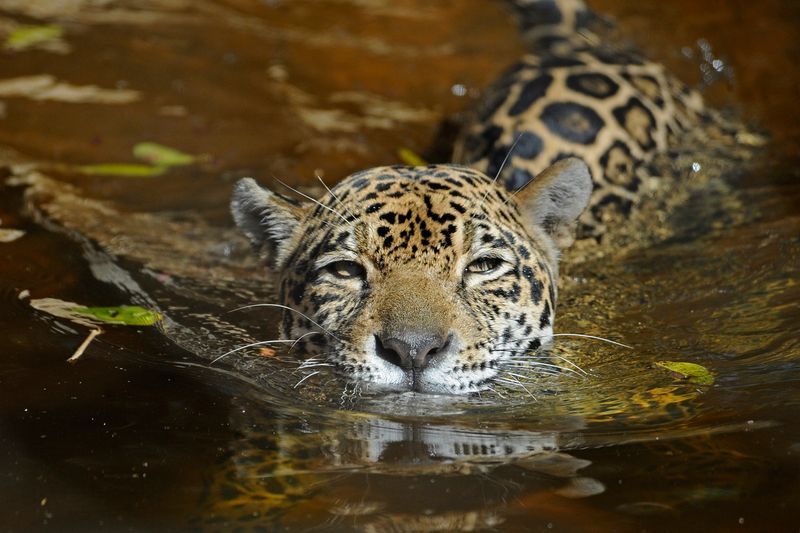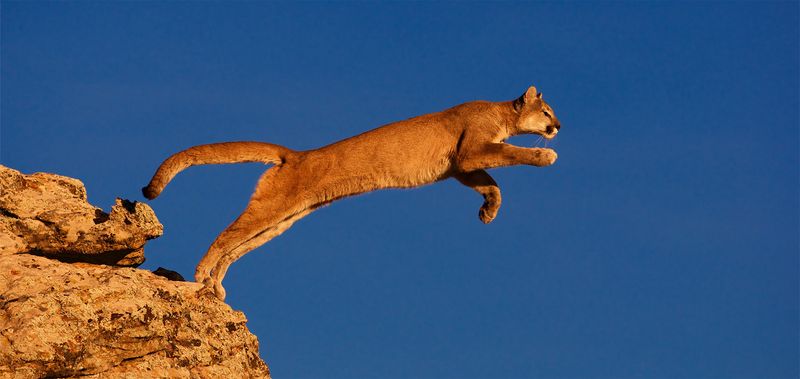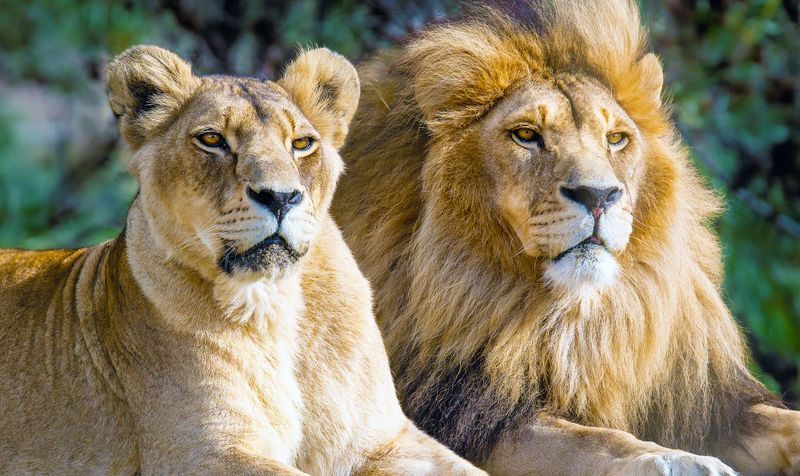📖 Table of Content:
- 1. South China Tiger
- 2. Amur Leopard
- 3. Sumatran Tiger
- 4. Malayan Tiger
- 5. Indochinese Tiger
- 6. Bengal Tiger
- 7. Sunda Clouded Leopard
- 8. Borneo Bay Cat
- 9. Flat-headed Cat
- 10. Fishing Cat
- 11. Marbled Cat
- 12. Asiatic Lion
- 13. Arabian Leopard
- 14. Iberian Lynx
- 15. Snow Leopard
- 16. Andean Mountain Cat
- 17. Pampas Cat
- 18. African Golden Cat
- 19. Iriomote Cat
- 20. Jaguarundi
- 21. Black-footed Cat
- 22. Cheetah
- 23. Eurasian Lynx
- 24. Jaguar
- 25. Puma
- 26. Lion
Big cats represent some of the most magnificent creatures on our planet, yet many teeter on the edge of extinction. These powerful predators maintain ecosystem balance by controlling prey populations and keeping other species healthy. From the misty Himalayan mountains to the dense Amazon rainforest, these cats face threats from habitat loss, poaching, and human conflict. Learning about these endangered felines is the first step toward protecting them for future generations.
1. South China Tiger
The South China tiger might already be extinct in the wild, with none reliably spotted since the 1980s. Once widespread across southern China, this tiger subspecies fell victim to intense hunting during China’s “anti-pest” campaigns.
These tigers are smaller than their Siberian cousins but still powerful predators. Their orange coats feature narrower, more closely spaced stripes than other tigers. A captive breeding program maintains about 100 South China tigers, all descended from just six wild ancestors. Scientists debate whether these captive tigers could ever be successfully reintroduced, as suitable habitat has largely disappeared under China’s rapid development.
2. Amur Leopard
With fewer than 100 individuals remaining, the Amur leopard is the most endangered big cat on Earth. Found in the Russian Far East and northern China, they’ve adapted remarkably to survive freezing winters.
Their thick, pale coats provide excellent camouflage in snowy forests. Unlike other leopards, they have longer legs and wider paws that help them move through deep snow. Poaching for their beautiful spotted fur remains the biggest threat to their survival. Conservation efforts include anti-poaching patrols, habitat protection, and breeding programs that aim to reintroduce captive-born leopards into protected areas.
3. Sumatran Tiger
The smallest of all tiger subspecies, Sumatran tigers thrive on Indonesia’s Sumatra island. Their rich, dark orange fur and pronounced black stripes camouflage them perfectly in the rainforest, and their compact size enables agile movement through dense foliage.
Male Sumatran tigers rarely exceed 300 pounds, making them significantly smaller than their mainland cousins. Fewer than 400 remain in the wild, threatened primarily by palm oil plantation expansion. Each tiger requires up to 30 square miles of territory to hunt and breed. When their forest homes are cleared, these tigers often come into deadly conflict with humans.
4. Malayan Tiger
Recognized as its own subspecies only in 2004, the Malayan tiger now teeters on the brink of extinction, with fewer than 200 individuals remaining in the wild. These medium-sized predators roam the tropical forests of the Malay Peninsula, hunting wild boar and deer. Unfortunately, their territories increasingly clash with growing human settlements, sparking conflict.
Traditional medicine markets continue to drive poaching despite international protection. Malaysian conservation groups work with local communities to reduce tiger-human conflicts. Camera traps monitor the remaining population while anti-poaching patrols protect critical habitat. Without immediate action, scientists predict these tigers could disappear completely within a single generation.
5. Indochinese Tiger
Having once ranged widely throughout Southeast Asia, Indochinese tigers today survive only in isolated groups within Thailand and Myanmar. With an estimated wild population below 350, these medium-sized cats feature darker coloring than Indian tigers and prefer dense forest habitats for hunting.
Decades of poaching for traditional medicine have devastated their numbers. Thailand’s Western Forest Complex represents their last stronghold, where dedicated ranger teams conduct regular patrols against poachers. Conservation efforts focus on creating protected corridors that allow tigers to move safely between fragmented forest areas.
6. Bengal Tiger
Though the most numerous of all tiger subspecies, Bengal tigers number fewer than 4,000 in the wild. They primarily inhabit India, alongside smaller populations in neighboring Nepal, Bhutan, and Bangladesh.
Adult males can weigh over 500 pounds and measure up to 10 feet from nose to tail. Their distinctive orange coats with black stripes provide perfect camouflage in grasslands and forests. India’s conservation efforts have shown promising results, with numbers slowly increasing in protected reserves. Project Tiger, launched in 1973, established dedicated tiger sanctuaries across the country. Despite these efforts, habitat fragmentation and human-tiger conflict continue to threaten their survival.
7. Sunda Clouded Leopard
Recognized as a separate species just in 2006, the Sunda clouded leopard remains one of the most mysterious big cats. Native to Borneo and Sumatra, these medium-sized felines showcase striking cloud-like patterns across their fur.
Their exceptionally long canine teeth are proportionally larger than those of any other living cat. These remarkable teeth, combined with short, powerful legs, make them formidable tree-dwelling hunters. Deforestation for palm oil plantations has destroyed much of their habitat. Scientists estimate fewer than 10,000 remain, but exact numbers are difficult to determine due to their secretive nature. These elusive cats are rarely seen, even by researchers who study them.
8. Borneo Bay Cat
Possibly the world’s most mysterious wild cat, the Borneo bay cat lives solely on Borneo. Photographed in the wild just a handful of times, this shy feline is about twice the size of a house cat. Its reddish-brown coat blends seamlessly with the forest floor, yet much about its behavior remains a mystery to scientists.
Most information comes from just a few specimens and rare camera trap photos. Massive deforestation across Borneo threatens this cat before we can even learn its basic needs. Researchers estimate fewer than 2,500 mature individuals remain, scattered across increasingly fragmented forest patches. Without immediate habitat protection, this cat could vanish before we truly understand it.
9. Flat-headed Cat
Unlike typical wild cats, the flat-headed cat features a uniquely small, flat head with forward-facing eyes that provide sharp eyesight for hunting aquatic prey. With webbed paws and hooked claws, it’s perfectly built to catch fish and crustaceans in shallow streams.
Native to lowland wetlands of Malaysia, Indonesia, and Thailand, these cats are about the size of a domestic cat. Their reddish-brown fur helps them blend into murky wetland environments. Wetland drainage for agriculture and palm oil plantations has destroyed much of their habitat. With fewer than 2,500 adults remaining, conservation efforts focus on protecting the remaining wetland areas these specialized hunters need to survive.
10. Fishing Cat
More than occasional fishers, fishing cats have water woven into their very existence. Equipped with partially webbed paws and water-repellent fur, these medium-sized cats swim effortlessly in pursuit of fish. Native to South and Southeast Asia’s wetlands, they regularly dive underwater to snag aquatic prey.
Their short, muscular tails act as rudders while swimming. Wetland destruction for agriculture and aquaculture has eliminated much of their habitat. Once common across Asia, fewer than 10,000 remain in fragmented populations. Conservation efforts include wetland restoration projects and community education programs that highlight the ecological importance of these specialized hunters.
11. Marbled Cat
The marbled cat looks like a miniature clouded leopard, with similar cloud-shaped markings on its coat. About twice the size of a house cat, these tree-dwelling felines live in the tropical forests of Southeast Asia. Their exceptionally long tails – equal to their body length – provide perfect balance for life in the forest canopy.
These cats spend more time in trees than almost any other wild cat species. Deforestation across Southeast Asia threatens their survival. Scientists estimate fewer than 10,000 mature individuals remain, but their secretive nature makes accurate counts difficult. Little is known about their behavior in the wild, as these elusive cats are rarely observed even in areas where they’re known to exist.
12. Asiatic Lion
Once ranging from the Mediterranean all the way to India, Asiatic lions now survive in a single small forest in Gujarat, India, with about 600 wild individuals left. Smaller than African lions, they have shorter manes and a unique skin fold along their bellies.
Living in a single location makes them extremely vulnerable to disease outbreaks or natural disasters. A single epidemic could potentially wipe out the entire wild population. Conservation efforts have helped their numbers increase from just 20 individuals in the early 20th century. Indian authorities are working to establish a second population in another protected area to reduce extinction risk.
13. Arabian Leopard
As the tiniest leopard subspecies, the Arabian leopard thrives in some of the planet’s most unforgiving desert environments. Its pale yellow fur blends flawlessly with rocky deserts, helping it survive across Yemen, Oman, and Saudi Arabia. Fewer than 200 of these rare cats remain in the wild.
These desert specialists can go for long periods without drinking, getting most of their moisture from their prey. Habitat fragmentation and hunting have pushed them to the brink of extinction. Conservation breeding programs aim to reintroduce captive-bred leopards to protected areas. Saudi Arabia’s Royal Commission for AlUla leads efforts to restore habitat and reintroduce these cats to their former range.
14. Iberian Lynx
In the early 2000s, the Iberian lynx population dwindled to under 100, bringing the species to the edge of extinction. Found only on the Iberian Peninsula, these medium-sized cats sport tufted ears and striking beard-like ruffs on their faces. Their continued survival hinges on one main food source — the European rabbit.
When rabbit populations crashed due to disease, the lynx nearly disappeared. Intensive conservation efforts represent one of wildlife protection’s greatest success stories. Captive breeding programs, habitat protection, and rabbit population restoration have helped increase numbers to over 1,000 cats. Despite this progress, the Iberian lynx remains the world’s most endangered cat species.
15. Snow Leopard
High in Central Asia’s mountain ranges, snow leopards thrive in harsh, elevated environments. Their thick fur insulates against freezing temperatures, while wide paws and long tails provide balance on steep snowy cliffs. These elusive cats usually stay above 3,000 meters, their pale gray fur patterned with black rosettes offering perfect camouflage.
Climate change threatens their alpine habitat, pushing tree lines higher and altering prey distribution. Approximately 4,000-6,500 remain across 12 countries, but accurate counts are difficult due to their remote habitat. Conservation efforts focus on reducing human-wildlife conflict, as snow leopards occasionally prey on livestock when natural prey becomes scarce.
16. Andean Mountain Cat
Living higher than nearly all other cats, the Andean mountain cat calls the remote Andes Mountains home. Surviving above 3,000 meters where oxygen is thin and cold is harsh, these small felines rely on their thick ash-gray coats for vital insulation.
Distinctive dark gray bands on their tails help researchers identify individuals in the wild. With fewer than 2,500 adults remaining across Peru, Bolivia, Chile, and Argentina, these cats face threats from habitat loss and hunting. Local communities sometimes kill them due to superstitious beliefs. Conservation efforts include education programs that work with indigenous communities to protect these rare mountain dwellers.
17. Pampas Cat
Adaptable to a broad spectrum of South American environments, the pampas cat roams grasslands, deserts, and mountainous regions alike. Its medium-sized body is cloaked in fur that shifts dramatically with habitat—light and sandy in open plains, dark and marked in mountainous areas. The name “pampas” only tells part of its story.
These adaptable cats can be found from Ecuador to Argentina in habitats ranging from sea level to 5,000 meters elevation. Agricultural expansion threatens their grassland habitats, while mining and development impact mountain populations. Though more widespread than many endangered cats, their numbers are declining across their range as human activities fragment their habitats.
18. African Golden Cat
Though it dwells in accessible African rainforests, the African golden cat remains a mysterious and little-known feline. About double the size of a typical house cat, this secretive hunter shows two primary coat colors: warm reddish-brown and muted slate gray, both sometimes patterned with spots or stripes.
Native to the rainforests of West and Central Africa, they hunt both on the ground and in trees. Unlike many forest cats, they’re active during both day and night. Bushmeat hunting threatens these cats directly and indirectly by reducing their prey. Commercial logging fragments their forest habitat. Camera trap studies provide most of what we know about these elusive cats, as they’re rarely observed in the wild despite living in relatively accessible forests.
19. Iriomote Cat
The Iriomote cat exists only on Iriomote Island, a tiny Japanese island measuring just 11 by 15 miles. These small, dark-colored cats are closely related to the leopard cat but have evolved in isolation for thousands of years. With fewer than 100 individuals remaining, they’re among the world’s rarest cats.
Their dark brown coats with limited markings help them hunt in the island’s dense subtropical forests. Tourism development threatens their limited habitat, while introduced diseases from domestic cats pose additional risks. The entire species could be lost to a single disease outbreak or natural disaster. Japanese conservation efforts include strict habitat protection and programs to control feral cat populations that might spread diseases.
20. Jaguarundi
Looking more like a weasel than a cat, the jaguarundi sports a long body, short legs, and small rounded ears. Unlike most felines, it appears in two distinct color variants—deep charcoal and rusty red—with both shades sometimes found in one litter. These elusive cats roam from southern Texas to northern Argentina.
They prefer dense undergrowth near water sources, hunting small mammals, birds, and reptiles. Habitat loss across their range has fragmented populations, particularly at the northern edge in Texas where they may already be extinct. Their secretive nature and preference for dense cover make population assessments difficult, but scientists believe their numbers are declining throughout their range.
21. Black-footed Cat
Small yet deadly, the black-footed cat ranks among Africa’s most effective hunters despite being the continent’s smallest wild cat. Roughly half the size of a house cat, these stealthy predators succeed in 60% of their hunts—better than lions. Found in southern Africa’s dry zones, they’re named for the black fur on their paw bottoms.
These markings protect their foot pads from the hot desert sand. Despite their hunting prowess, fewer than 10,000 remain in the wild. Habitat degradation from overgrazing and poisoning from pest control programs targeting other species threaten their survival. Their small size and nocturnal habits make them difficult to study in the wild.
22. Cheetah
The cheetah holds the title of world’s fastest land animal, capable of reaching speeds up to 70 mph in short bursts. These sleek cats use their extraordinary speed to chase down prey in the open grasslands of Africa. Unlike other big cats, cheetahs cannot roar – they chirp, purr and make high-pitched calls instead. Their small heads, lean bodies, and specialized semi-retractable claws are all adaptations for high-speed hunting.
Fewer than 7,000 remain in the wild, primarily in fragmented populations across Africa with a tiny population in Iran. Their low genetic diversity makes them vulnerable to disease, while habitat loss and human conflict continue to reduce their numbers despite conservation efforts.
23. Eurasian Lynx
As the largest lynx species, the Eurasian lynx stands as Europe’s third top predator after bears and wolves. Historically, they roamed across most of Europe and northern Asia but have been driven from much of Western Europe by hunting and shrinking habitats. Their distinctive tufted ears, short tails, and broad paws help them navigate the snowy forests of the north.
Their thick winter coats provide protection against temperatures as low as -40°F. Reintroduction programs have successfully restored populations to parts of their former range. While still endangered in Western Europe, healthy populations exist in Russia and other parts of Eastern Europe. These secretive cats require large territories and abundant prey to survive.
24. Jaguar
The jaguar stands as the largest cat in the Americas and the third largest worldwide. These powerful predators once ranged from the southwestern United States to Argentina, but have lost over 50% of their historic range. Unlike many big cats, jaguars love water and are excellent swimmers. Their exceptionally powerful jaws can pierce turtle shells and crocodile armor.
Fewer than 15,000 remain in the wild, primarily in the Amazon Basin. Ranching, agriculture, and development continue to fragment their habitat. Conservation corridors aim to connect isolated populations, allowing genetic exchange between groups. Mexico and the United States have begun restoration efforts that may eventually return jaguars to parts of their northernmost historic range.
25. Puma
Also called cougars or mountain lions, pumas are the most widely spread land mammals in the Western Hemisphere, thriving in habitats from Canada’s Yukon to the far reaches of Argentina’s Andes mountains.
Unlike true big cats, pumas cannot roar. They’re known for their impressive leaping ability, capable of jumping 18 feet vertically from a standing position. While relatively secure in parts of their range, pumas face increasing habitat fragmentation and conflict with humans. Eastern North American populations were hunted to extinction by the early 1900s, with the exception of the critically endangered Florida panther. Recent conservation efforts have allowed pumas to naturally recolonize parts of their former midwestern range.
26. Lion
Unique among cats, lions live socially in prides — tight-knit family groups. Once widespread across Africa, the Middle East, and India, lions have seen their range shrink by over 90%. Male lions begin growing their iconic manes around their first or second year.
The size and color of the mane signal genetic quality and fighting ability to both rivals and potential mates. Fewer than 25,000 remain in the wild, primarily in eastern and southern Africa, with a tiny population in India’s Gir Forest. Habitat loss and human conflict continue to reduce their numbers. Trophy hunting remains controversial, with some arguing it provides conservation funding while others maintain it threatens vulnerable populations.
